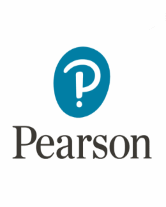Objective
This is an introduction to comparing fractions with like denominators and unlike numerators, for students with a basic understanding of fractions as part of a whole, numerators, and denominators. After completing the lesson, students will be able to name and write fractions represented by drawings or models and represent a fraction using models and symbols.
Key Understandings/Vocabulary
Fraction: A number used to name a part of a group or a whole. The number below the bar is the denominator, and the number above the bar is the numerator.
Numerator: The top part of a fraction. The numerator represents how many pieces of the whole that are discussed.
Denominator: The bottom part of a fraction. The denominator represents the total number of equal parts in the whole or the set.
Like Denominator: Fractions that have the same number as the denominator.
Procedure
-
Demonstration
-
Journaling. Have students write a short definition of a numerator in their journals. This is meant to access their prior knowledge of fractions, specifically numerators. Example journal entry: Numerators are the smaller number in a fraction. They are on the top of the fraction.
-
Review parts of a fraction using models. Draw a square divided into 4 equal parts with 3 parts shaded. Write the fraction 3/4 and review how it represents three of four equal parts shaded. The 3, or numerator, tells how many parts are shaded, while the 4, or denominator, shows how many equal parts the whole is divided into. Ask students to volunteer their definitions of numerators and discuss the correct definition, which could be something like: The number above the line in a fraction. The numerator represents how many pieces of the whole that are discussed. Draw a model of the fraction 2/4 and compare the two fractions. Ask, "Which fraction is greater?" Discuss the idea that the amount of space that is shaded shows which fraction is greater.
-
Journaling. Have students answer: How do you know if a fraction is greater than another fraction? This is meant to help students access their thinking and problem solving in comparing fractions. Example journal entry: I know when a fraction is bigger than another fraction by comparing how big they both are.
-
Draw a rectangle with 4 parts. Shade one of the equal parts, and write the fraction. Explain what the numerator represents. Draw a similar rectangle directly below the first rectangle, and shade another equal part, so that 2 parts are shaded, and write the fraction, explaining the numerator. Draw another rectangle, directly below the second rectangle, and shade another part, and write the fraction. Point out that the number of shaded parts increases, and discuss how the numerator changes, depending on how many parts are shaded.
-
Have students use this handout and square pieces of paper cut to use as fraction squares. Ask them to cover one more part, and write the fraction. Continue until all parts are covered. The fractions they wrote should be: 1/8, 2/8, 3/8, 4/8, 5/8, 6/8, 7/8, 8/8.
Journaling. Write what happens when the numerator of a fraction increases. Pair up students, have them exchange notebooks and discuss what they found. As a class, have students share what they wrote, and discuss their findings. Example journal entry: The numerator gets bigger when more of the parts are shaded. The number of equal parts doesn't change when the numerator increases. As the numerator increases, the covered parts increase.
Compare fractions. Introduce or review the inequality symbols of greater than, > and less than, <. have="" students="" use="" the="" fraction="" pieces="" to="" show="" and="" then="" explain="" how="" write="" an="" inequality="" from="" left="" right="" read="" it="" as="" a="" sentence.="" for="" example="" is="" less="" than="" three-eighths.="" if="" need="" help="" in="" remembering="" which="" symbol="" you="" might="" want="" them="" think="" of="" animal="" such="" alligator="" who="" wants="" eat="" greatest="" fraction.="" should="" be="" opened="">
-
Guided Practice
To provide guided practice comparing fractions with like denominators, have each student in a pair cover as many parts as they choose, then compare the two fractions that are made. Have pairs determine which is greater, by writing the inequality, and stating the fractions aloud. For example students may write 1/8 > 2/8, and say, "1/8 is greater than 2/8."
Sharing Ideas
Have students return to their previous writing, and revise their answers to the question: How do you know if a fraction is greater than another fraction? Discuss answers with the class. Journaling. Have students reflect on the lesson and journaling. Have them write about what they liked about journaling and if they learned more about comparing fractions.
Independent Practice
Have students draw several pictures of two fractions with like denominators, and then determine which is greater. Students can write an inequality comparing the fractions. For example: 2/3 > 1/3
-
Assessment
Check student understanding by observing their answers during guided practice, along with checking their independent practice examples.

Use a lesson that is an introduction to comparing fractions with like denominators and unlike numerators, for students with a basic understanding of fractions as part of a whole, numerators, and denominators. Students use math journals to complete the lesson.



